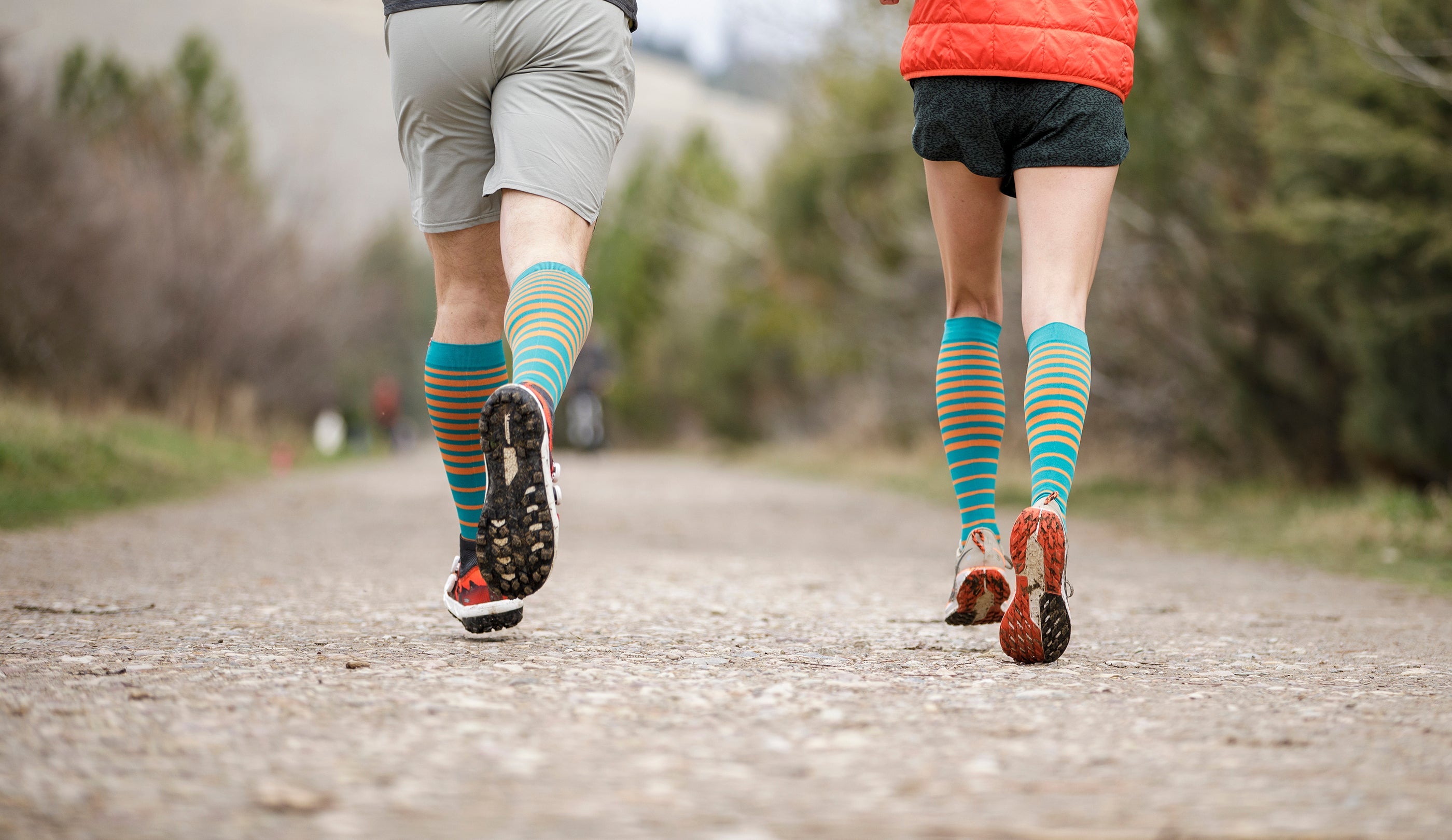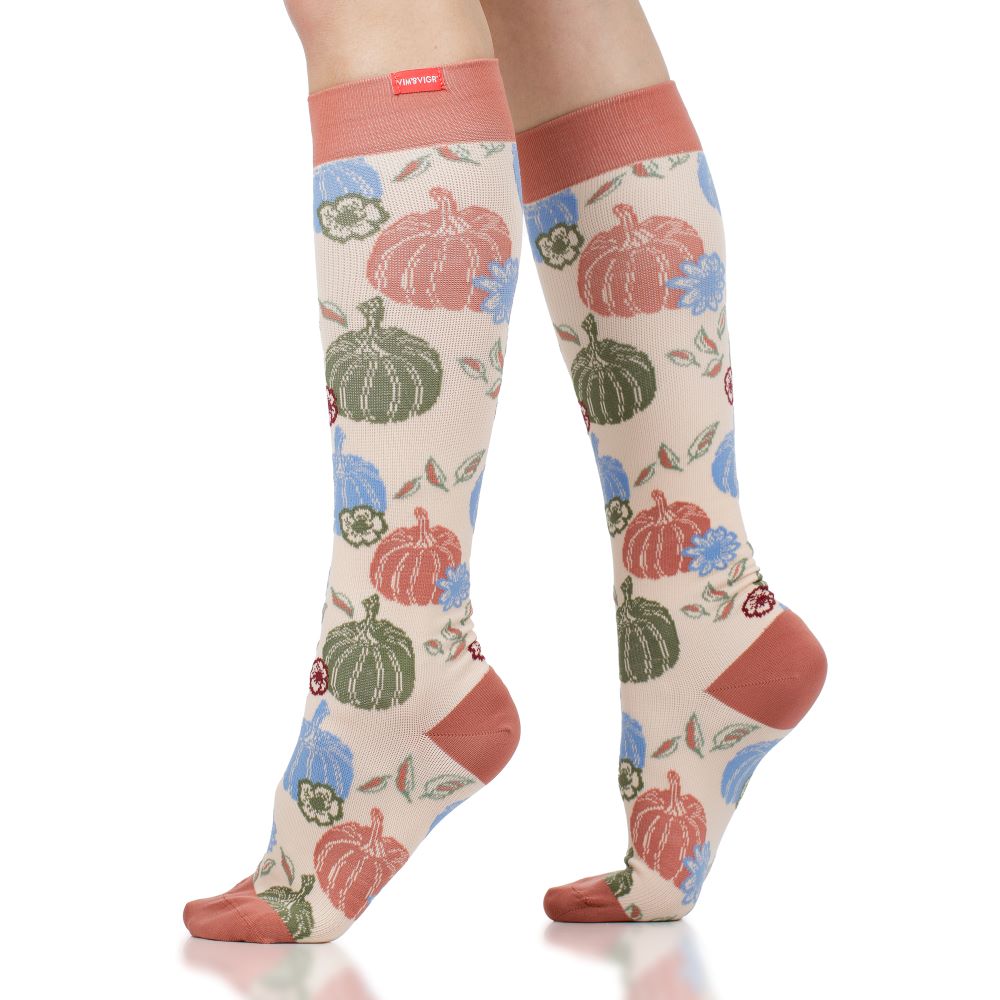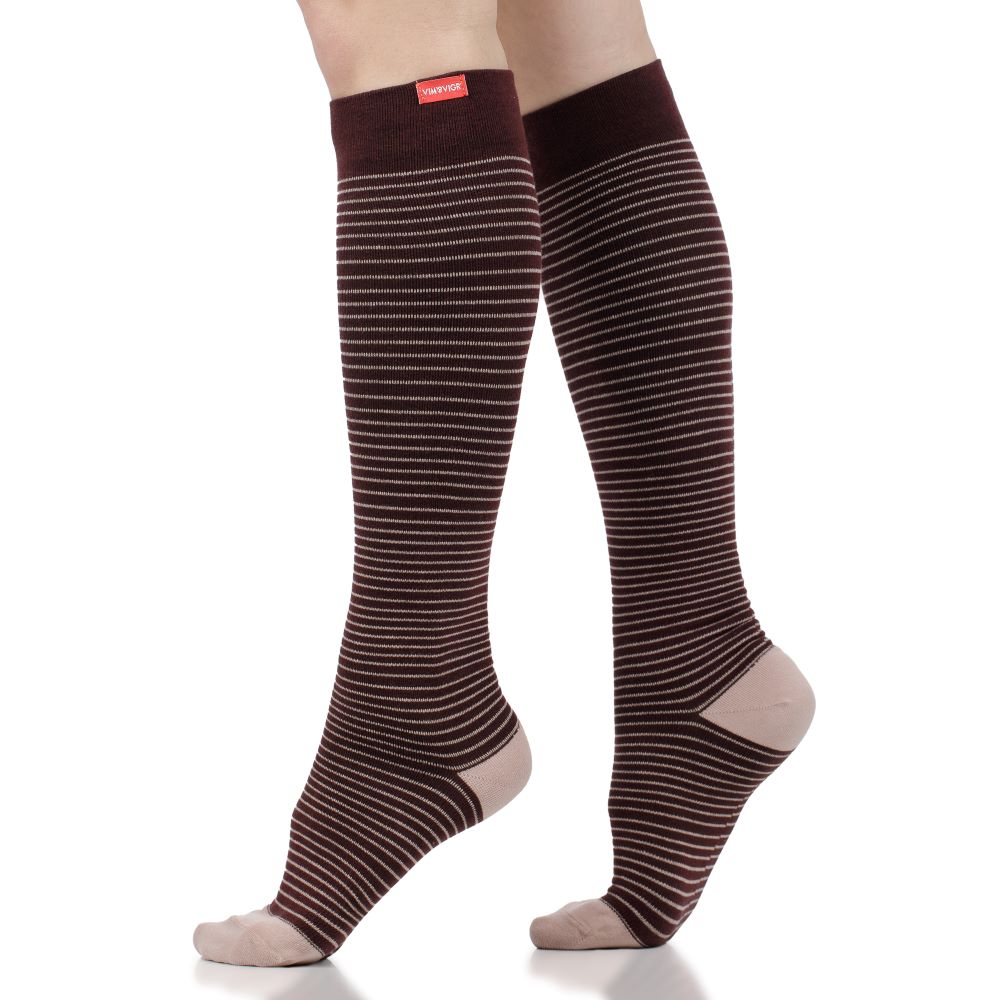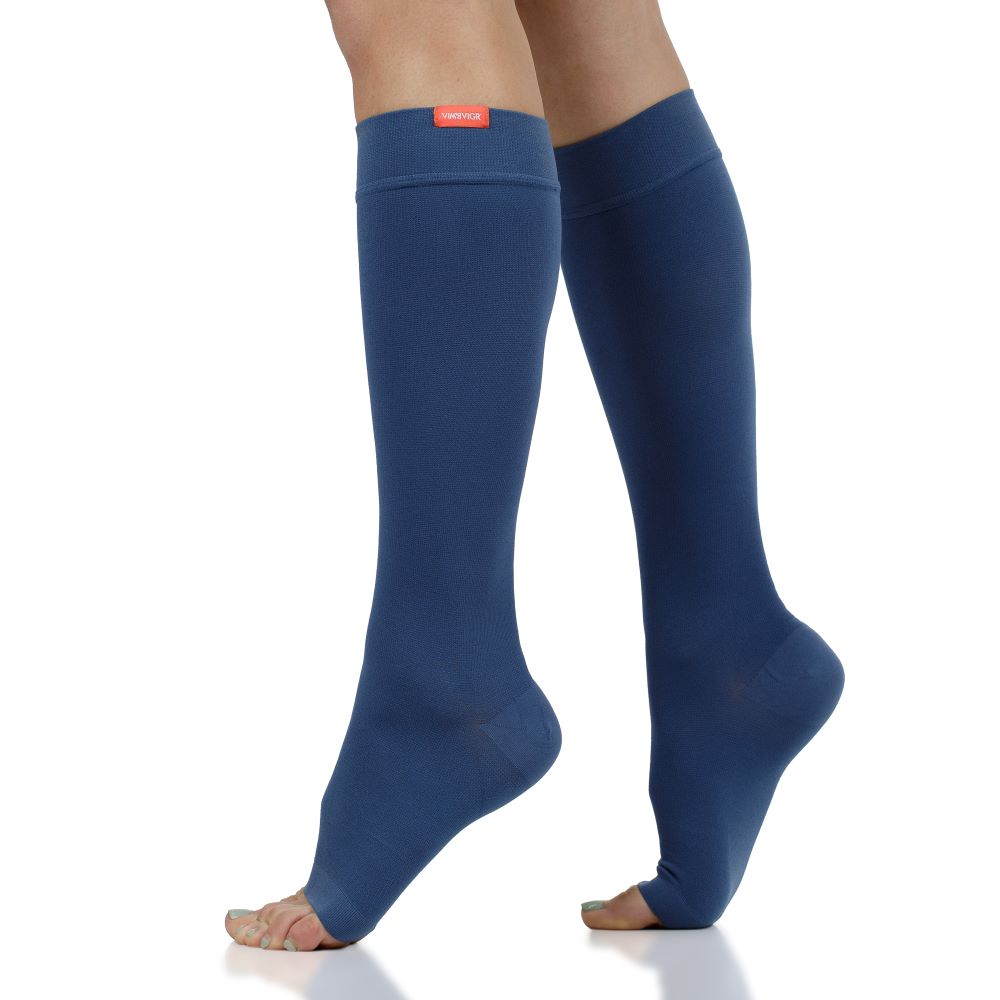The Benefits of Lymphedema Compression Stockings
Swollen legs can be uncomfortable, hindering you from enjoying day to day life and even escalating to truly painful and debilitating. Whether you’re suffering from some swelling caused by long hours of plane travel or you’re actually a victim of lymphedema, having an easy to reach for, convenient and effective remedy to the swelling is essential.
Can compression stockings help those suffering from lymphedema in particular? What are the benefits of compression and how should you wear compression garments to combat the effects of primary lymphedema and associated conditions?
This article will tell you all you need to know about lymphedema and how compression stockings and socks can give you some well-deserved relief from its symptoms.
Do Compression Stockings Help Lymphedema?
Thanks to their action on your legs and feet, compression stockings and socks help fluid move around the lower limbs, prevent fluid buildup (whether it’s blood or lymph fluid) and prevent swelling and painful symptoms from developing.
Compression stockings are one of the forms of treatment recommended for any type of edema (swelling) in general, and in particular for lymphedema. The way they work allows them to pump fluid back into the body, through a gentle squeeze that’s both comfortable and effective. Because of their effectiveness at improving circulation, the impact of wearing compression socks or stockings on lymphedema is also extremely positive.
This makes them ideal for all-day use, as well as for wearing in a preventative manner to help cancer patients who know they’re going for treatments put a stop to lymphedema before it has a chance to develop.

What is Lymphedema and What Causes It?
To better understand the role of compression garments against symptoms of lymphedema, let’s first delve deeper into the condition. Lymphedema is a type of swelling caused by build-up of lymph fluid in your body.
Lymph fluid is a natural type of fluid that exists in the body, part of the lymph system that carries fluid and cells that help your body fight infections. Additionally, lymph nodes throughout the body act like a drain – and, if they get clogged, then the lymph fluid doesn’t move and drain properly, leading to lymphedema.
Very often, lymphedema occurs in the arms and legs. It is usually caused by cancer or cancer treatment. This is because cancerous tumors can sometimes grow big enough to block the lymph system.
Surgery to remove a tumor can also lead to blocked lymph nodes or vessels that carry lymph fluid. Finally, the radiation treatment used against cancer can damage lymph vessels, causing too much lymph fluid to build up in the tissues.
You can read more about lymphedema, its symptoms and potential health ramifications, here.
The Benefits of Compression Stockings for Lymphedema
While there is no cure for lymphedema, we can alleviate its principal symptom – the swelling on legs and feet – through a number of actions and remedial measures. These include:
- Movement and exercise – helping lymph fluid to move through your limbs and hopefully reducing the swelling;
- Massage therapy – aiming to push lymph fluid out of the swollen area;
- Wearing compression stockings or a compression sleeve – helping lymph fluid flow out of the area where compression is applied;
- Weight loss;
- Surgery;
- A pneumatic pump which inflates a sleeve placed on the swollen limb;
- Cancer treatment in cases where lymphedema has been caused by a cancerous tumor.
As you can see, compression stockings are part of the key ways to relieve lymphedema symptoms. This is because compression stockings limit the buildup of lymph fluid, as well as help it move to a well-draining part of the body.
Through graduated compression, socks and sleeves can help support the muscles in your legs too, stimulating their ability to pump away the fluid.
Compression socks help Lymphedema by gently squeezing the ankle and gradually getting less tight up the leg. This helps to move blood and other fluids through the body, preventing build up and heavy feelings associated with the legs like edema.
How to Use Lymphedema Compression Stockings
If you’ve been advised to wear lymphedema compression stockings, it’s important to ensure that you are not simply buying any pair of compression socks or garments without first researching their effectiveness. Good quality, graduated compression garments will be the most effective.
To use lymphedema compression stockings, begin by first identifying the level of compression you need. You should start by wearing lighter compression stockings (15-20 mmHg) and, after adjusting to that level of pressure, experimenting with increasing it if necessary. You can also consult with your doctor – as they could advise wearing medical grade (i.e. tighter) socks or stockings.
What’s the difference between the various compression garments? We often refer to lymphedema compression stockings, but it’s worth being aware of socks and sleeves too. Here’s a quick summary of the types of garments you can wear:
- Compression stockings are longer, can go all the way up your thighs, but will typically not cover your pelvic area. They are used often by athletes recovering from sports efforts, and can help extend the benefits of compression to your upper legs;
- Compression tights or leggings cover your legs and pelvic area all the way up to your waist;
- Compression socks typically cover feet and lower legs up to just below the knee. They are the most popular option for those looking for lymphedema compression benefits as they are easy to wear with any type of clothing and in any situation;
- Compression sleeves can cover a particular, smaller surface of your body. For example, you can wear calf sleeves that only cover the lower legs from ankle to below the knee, or arm sleeves as well.
Ultimately, all lymphedema compression stockings, socks or tights serve the same purpose: stimulating blood and lymph fluid circulation and preventing swelling in your lower (or entire) legs. The choice of garment depends on the particular part of your body you want to focus on, your style and personal preference.

How Long to Wear Compression Stockings for Lymphedema
If you’re wondering how long is safe to wear your lymphedema compression stockings, there is no set time limit. In fact, you could wear compression garments 24 hours a day if you wanted to.
We don’t advise wearing your first compression stockings for longer than 3-4 hours at the start, however. This is simply to give your body the opportunity to adjust to the compression feeling. Then, you can gradually progress the length of time you wear them, until you can make the choice of wearing them over night or for a long stretch at a time.
Choosing the Best Lymphedema Compression Stockings
The best way to choose your lymphedema compression stockings is to ensure you pick high quality, gradual compression garments that suit your style and your medical condition. You should also pay attention to the following factors that influence how comfortable you’ll feel.
Strength of Compression
The strength of compression for your socks or stockings is measured in mmHg – millimeters of mercury. This measurement is common among doctors, referring to the pressure that a 1 mm-high column of mercury can generate. Whilst an uncommon number to look for, the ranges of pressure you can expect from compression socks help you go from lighter to stronger. You can get more guidance here and you can shop for different levels of compression socks on our website here.
Size
Finding the right size is important for lymphedema compression stockings. While the strength of compression determines how much pressure is applied on your lower legs, the size ensures that the socks or stockings fit well, don’t bunch up or roll down your leg, and actually deliver the benefits that you’re looking for.
You should start by using a sizing guide for the items you wish to purchase. Then, ideally, try them out in store to ensure that your compression stockings fit well, without being uncomfortable.
Material
Finally, choosing the material for your compression garments is important for comfort, too. While merino wool is ideal for those going out on long hikes or spending time outdoors, it’s also great for keeping the temperature of your lower limbs constant. Merino wool also helps drain away moisture to keep your feet dry in hot or humid temperatures (and you can also opt for moisture-wick Nylon socks for this purpose).
Of course, cotton lymphedema compression stockings give you comfort, breathability and wide range of styles, while Nylon is a great material for superior strength and stretch.
So, before choosing your socks, consider what activities you plan to wear them for and the weather conditions you plan to put them through.
Where to Buy Lymphedema Compression Stockings
Lymphedema is a difficult condition to avoid when undergoing cancer treatment. When you’re already going through a tough time in your life, having a garment that can alleviate pain and swelling and make you feel more comfortable in your own skin, while also continuing your regular daily activities, can be a huge advantage. You can shop for comfortable, effective lymphedema compression stockings on our website, and browse our wide range of various compression garments for all seasons, activities and styles.
Find the best lymphedema compression stockings online at Vim & Vigr.



















Leave a comment